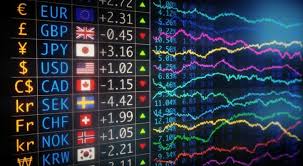
Forex trading, or foreign exchange trading, is a global market where currencies are exchanged. It has grown immensely in popularity due to its accessibility and potential for profit. Whether you’re a beginner or an experienced trader, having the right resources and knowledge is critical for success. One resource that can provide insight and assistance is trading forex Trading Broker ID, a tool for identifying credible trading brokers. In this article, we will explore various aspects of Forex trading, covering essential strategies, tips, and market insights to help you navigate this dynamic field.
Understanding Forex Trading
The Forex market is the largest financial market in the world, with a daily trading volume exceeding $6 trillion. Unlike stock markets, Forex is decentralized, meaning trades occur over-the-counter (OTC) rather than on centralized exchanges. Traders buy and sell currency pairs, speculating on the price movements between two currencies, such as the Euro and the US Dollar (EUR/USD).
The Mechanics of Forex Trading
Forex trading involves buying one currency while simultaneously selling another. Each currency pair has a bid price (the price at which you can sell) and an ask price (the price at which you can buy). The difference between these prices is known as the spread. Leverage is also a key feature of Forex trading; it allows traders to control a larger position with a smaller amount of capital, thus magnifying potential gains—and losses.
Key Strategies for Successful Forex Trading
To thrive in the Forex market, it’s essential to adopt effective trading strategies. Here are some widely used approaches:
1. Technical Analysis
Technical analysis involves studying price charts and using indicators to predict future price movements. Traders utilize tools such as moving averages, Relative Strength Index (RSI), and Fibonacci retracements to identify trends and potential reversal points. Mastering technical analysis requires practice and a sound understanding of market patterns.
2. Fundamental Analysis
Fundamental analysis focuses on economic indicators and news events that can affect currency values. Key factors include interest rates, economic growth, employment figures, and geopolitical stability. Traders who excel in fundamental analysis often monitor economic calendars and news outlets to make informed trading decisions.
3. Swing Trading
Swing trading aims to capture price swings over several days or weeks. Traders identify points where the market may reverse direction and enter positions to profit from these movements. This strategy is ideal for those who cannot watch the market closely throughout the day.
4. Day Trading
Day trading is a fast-paced approach that involves executing multiple trades within a single day. Traders aim to capitalize on small price movements and typically close all positions before the market closes to avoid overnight risk. This strategy requires a strong understanding of market volatility and quick decision-making skills.

5. Position Trading
Position trading is a long-term approach where traders hold positions for weeks, months, or even years, relying on fundamental analysis. This strategy is best suited for those who prefer a more passive investment style and can tolerate market fluctuations over a long time horizon.
Risk Management in Forex Trading
Risk management is crucial in Forex trading. The high volatility of currency pairs can lead to significant losses if positions are not managed effectively. Here are some key principles of effective risk management:
1. Set Stop-Loss Orders
A stop-loss order automatically closes a position when the price reaches a specified level, limiting potential losses. Traders should always set stop-loss orders to protect their capital.
2. Determine Position Size
It’s vital to calculate the appropriate position size based on your account balance and risk tolerance. A common rule is to risk no more than 1-2% of your trading capital on any single trade.
3. Diversify Your Trades
Avoid concentrating all your capital on a single currency pair. Diversification can help spread risk and reduce the impact of adverse market movements.
The Importance of Trading Psychology
Trading psychology plays a significant role in the success of Forex traders. Emotions such as fear and greed can lead to irrational decision-making. It is essential to develop a disciplined trading mindset, maintaining patience and objectivity while sticking to your trading plan.
Choosing a Reliable Forex Broker
Selecting the right broker is a crucial step in your Forex trading journey. Look for brokers with a solid reputation, regulation by recognized authorities, and favorable trading conditions. Utilize resources such as Trading Broker ID to compare and identify credible brokers in the market.
Conclusion
Forex trading can be a rewarding endeavor if approached with the right strategies, risk management practices, and psychological resilience. As you embark on your trading journey, continuously educate yourself, stay updated on market trends, and refine your techniques. Remember that mastering Forex trading takes time and persistence, so be patient and stay committed to your goals.
